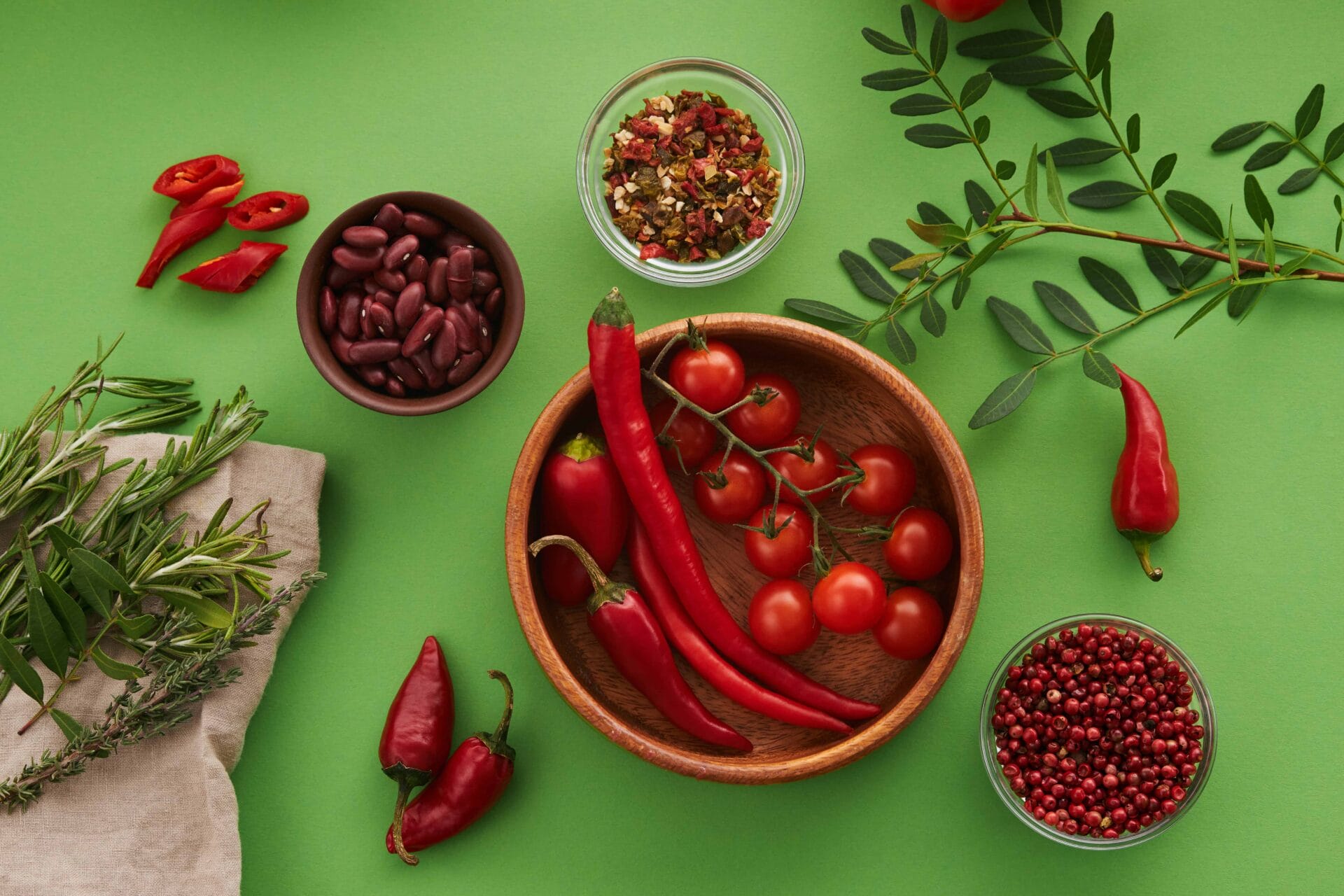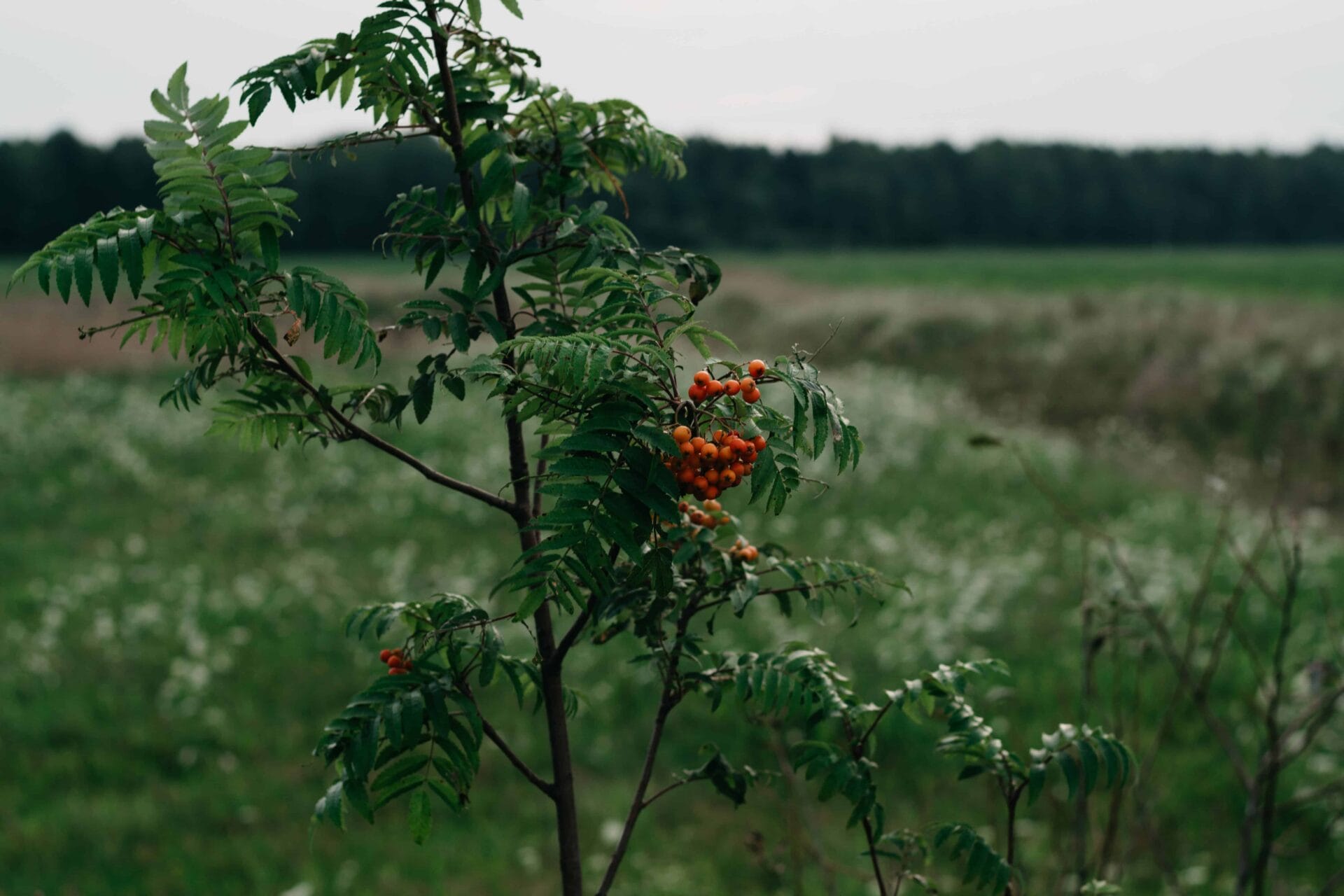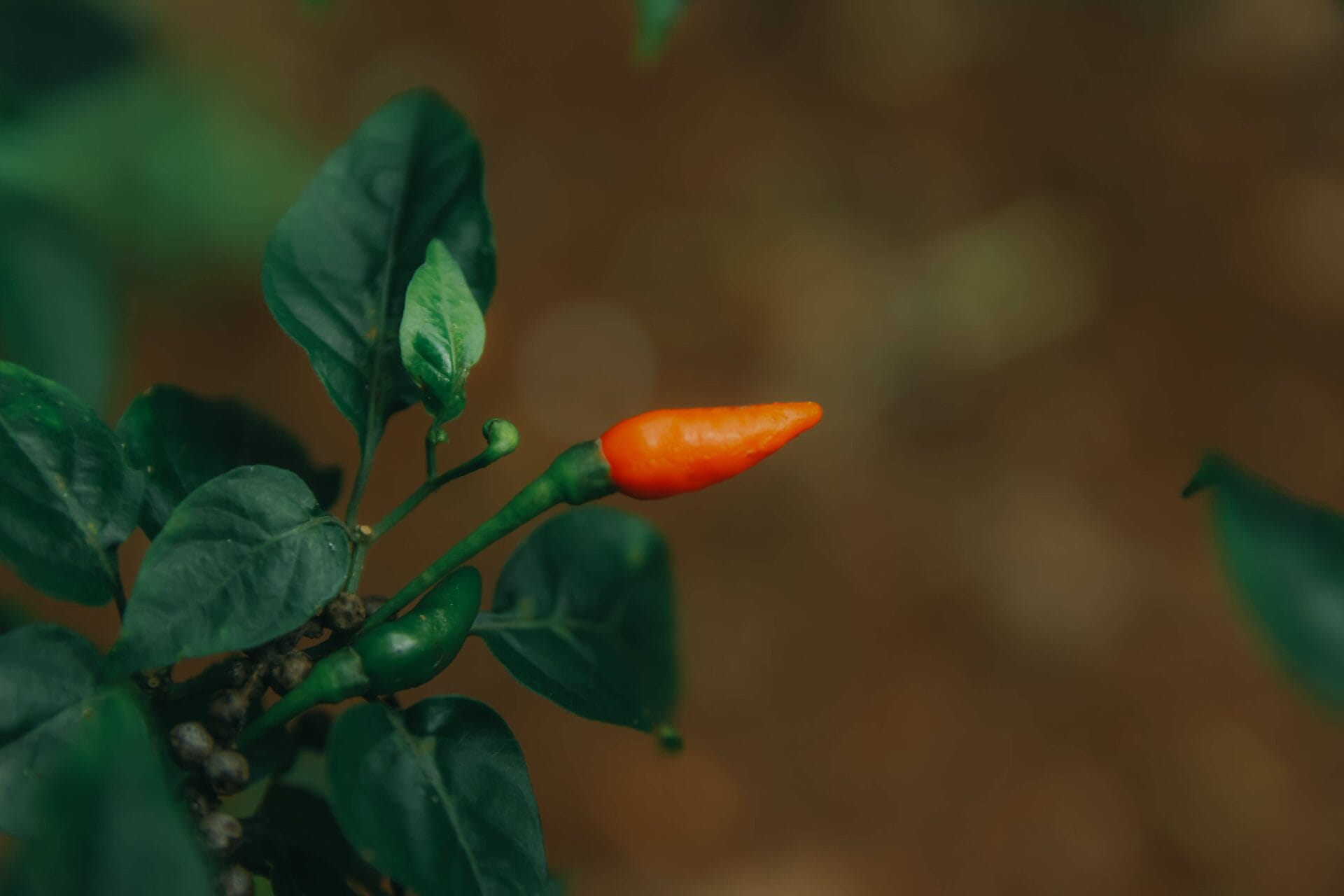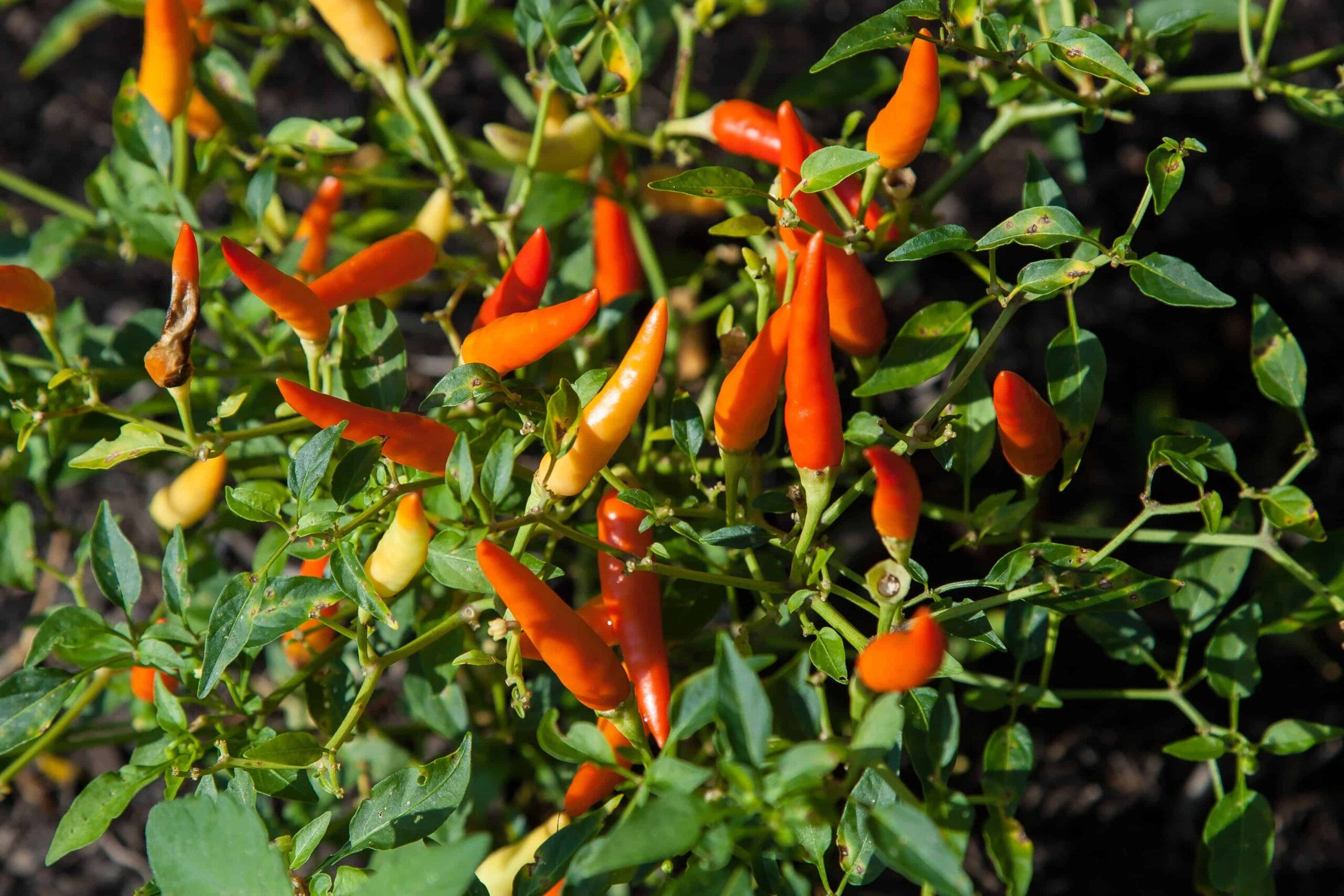Welcome to the world of fiery flavors and vibrant colors! How to grow hot peppers, If you’re a gardening enthusiast or someone who simply loves adding a kick to your meals, growing hot peppers is a thrilling and rewarding endeavor.
In this comprehensive guide, we’ll delve into the art of cultivating hot peppers, exploring everything from selecting the right pepper varieties to mastering the nuances of soil, sunlight, and watering.
Get ready to spice up your garden and savor the joy of cultivating your very own hot peppers.
1: Choosing the Right Pepper Varieties
Table of Contents
ToggleThe first step in your hot pepper journey is selecting the right varieties for your garden. With countless options available, it’s essential to consider factors like heat level, size, and flavor profile.
From the mild and fruity Anaheim to the fiery Habanero, each pepper variety offers a unique taste experience. We’ll help you navigate the wide array of choices and guide you toward the peppers that suit your preferences and growing conditions.
2: Preparing the Soil
A healthy foundation is crucial for successful pepper cultivation. Learn about the ideal soil composition, pH levels, and drainage requirements for hot peppers.
We’ll explore the benefits of composting and the role of organic matter in promoting robust plant growth. Discover the secrets to preparing the perfect soil bed that will nurture your hot pepper plants from seedlings to harvest.
3: Starting from Seeds of How to grow hot peppers

Whether you’re a seasoned gardener or a novice, starting your hot pepper journey from seeds is a rewarding experience.
This chapter will walk you through the step-by-step process of germinating hot pepper seeds, providing essential tips on temperature, moisture, and light requirements.
From seed trays to germination mats, we’ll explore the tools and techniques that will set the stage for a successful pepper-growing venture.
4: Transplanting Seedlings

Once your hot pepper seedlings have reached a healthy size, it’s time to transplant them into their permanent home. Learn the art of transplanting, including proper spacing, container selection, and acclimating seedlings to outdoor conditions.
We’ll discuss the advantages of using raised beds and containers, offering flexibility for gardeners with limited space.
5: Sunlight and Temperature Needs
Hot peppers thrive in warm and sunny conditions, but it’s crucial to strike the right balance.
Discover the optimal sunlight and temperature requirements for different pepper varieties, and learn how to protect your plants from extreme weather conditions.
Whether growing peppers in a garden bed or containers, understanding the sunlight and temperature needs is key to a bountiful harvest.
6: Watering Strategies
Proper watering is a fundamental aspect of hot pepper care. In this chapter, we’ll explore the delicate balance between overwatering and underwatering, emphasizing the importance of consistent moisture levels.
From drip irrigation systems to hand-watering techniques, you’ll gain insights into the best watering strategies to keep your hot peppers thriving.
7: Fertilizing for Success
Unlock the secrets of fertilizing hot peppers for optimal growth and fruit production. We’ll delve into the role of essential nutrients like nitrogen, phosphorus, and potassium, and explore organic and synthetic fertilizer options.
Discover when and how to apply fertilizers to ensure a nutrient-rich environment that encourages robust pepper plant development.
8: Pruning and Supporting Your Plants
Hot pepper plants can benefit greatly from proper pruning and support.
Learn how to shape your plants for improved air circulation, disease prevention, and higher yields.
We’ll discuss staking techniques and the art of removing suckers to channel energy into fruit production.
Mastering the skill of pruning and supporting your hot pepper plants will result in healthier, more productive crops.
9: Managing Pests and Diseases
No garden is immune to pests and diseases, but you can protect your hot pepper plants with the right knowledge.
Identify common pests and diseases that affect peppers and explore organic methods for prevention and control.
From companion planting to natural predators, we’ll equip you with the tools to keep your hot peppers healthy and pest-free.
10: Harvesting and Storing Your Hot Peppers
The culmination of your hard work arrives when it’s time to harvest your hot peppers.
Learn the signs of ripeness for different pepper varieties and discover the best harvesting techniques to ensure a bountiful yield.
We’ll also explore proper storage methods to preserve the flavor and heat of your peppers, whether you prefer to use them fresh, dried, or processed into sauces and powders.
Appendix: Hot Pepper Varieties Quick Reference Guide
Before we conclude, let’s provide a quick reference guide summarizing some popular hot pepper varieties and their characteristics:
Anaheim Pepper (Capsicum annuum):
– Heat Level: Mild
– Flavor Profile: Sweet and mild, with a slight tang
– Ideal Use: Roasting, stuffing, and mild salsasJalapeño Pepper (Capsicum annuum):
– Heat Level: Medium
– Flavor Profile: Crisp and slightly tangy
– Ideal Use: Salsas, pickling, and grillingSerrano Pepper (Capsicum annuum):
– Heat Level: Medium to Hot
– Flavor Profile: Bright and biting
– Ideal Use: Fresh salsas, sauces, and garnishesCayenne Pepper (Capsicum annuum):
– Heat Level: Hot
– Flavor Profile: Spicy and pungent
– Ideal Use: Drying for pepper flakes, hot sauces, and spice blendsHabanero Pepper (Capsicum chinense):
– Heat Level: Very Hot
– Flavor Profile: Fruity and intense
– Ideal Use: Extremely spicy dishes, hot sauces, and marinades
Remember, these are just a few examples, and there are countless other hot pepper varieties to explore. Experimenting with different peppers allows you to create a diverse and exciting range of flavors in your culinary creations.

Additional Tips for Hot Pepper Success
Before you dive headfirst into your hot pepper growing adventure, consider these additional tips to ensure a successful and enjoyable gardening experience:
1. Companion Planting:
– Utilize companion planting to deter pests and promote overall garden health naturally.
Consider planting basil, oregano, or marigolds alongside your hot peppers to ward off common pests and enhance flavor.
2. Mulching:
– Apply a layer of organic mulch around your hot pepper plants to retain moisture, suppress weeds, and regulate soil temperature.
Mulching also contributes to the enrichment of the soil as it decomposes.
3. Crop Rotation:
– Practice crop rotation to prevent soil-borne diseases and pests. Avoid planting hot peppers in the same spot where they or other members of the nightshade family were grown in the previous year.
4. Temperature Considerations:
– Be mindful of temperature fluctuations, especially if you’re growing hot peppers in containers.
Consider moving pots indoors during unseasonably cold nights to protect the plants.
5. Harvesting Etiquette:
– When harvesting hot peppers, use garden gloves to protect your hands from the oils that can cause skin irritation. Also, avoid touching your face, especially your eyes, while handling hot peppers.
6. Saving Seeds:
– If you’re particularly fond of a specific hot pepper variety, consider saving seeds for future plantings.
Allow the peppers to fully ripen on the plant before harvesting the seeds. Dry them thoroughly before storing them.
7. Continuous Care:
– Hot pepper plants are not set-it-and-forget-it; they require ongoing care. Regularly inspect your plants for pests, signs of disease, and nutrient deficiencies. Address issues promptly to maintain plant health.
8. Community and Online Resources:
– Join gardening forums, local gardening clubs, or online communities to share experiences, seek advice, and learn from fellow hot pepper enthusiasts.
The exchange of ideas can be invaluable in enhancing your gardening skills.
Remember, every garden is unique, and your hot pepper journey is a personal exploration.
Adapt these tips to suit your specific conditions, and don’t be afraid to experiment.
Gardening is as much an art as it is a science, and the more you immerse yourself in the process, the more you’ll discover about the fascinating world of hot peppers and the joy of cultivating your food.
In Closing
As we conclude our comprehensive guide on growing hot peppers, we hope you feel inspired and well-prepared to embark on this exciting gardening venture.
The journey may have its challenges, but the rewards are plentiful— from the satisfaction of nurturing life to the culinary delight of enjoying homegrown, flavorful hot peppers.
Remember, gardening is a journey of continuous learning and growth. Embrace the cycles of nature, celebrate the successes, and learn from the challenges.
Your garden is a dynamic, living ecosystem, and each season brings new opportunities to refine your skills and deepen your connection to the natural world.
So, venture forth, cultivate the fiery spirit of hot peppers in your garden, and let the vibrant colors and bold flavors enrich both your culinary adventures and your appreciation for the wonders of nature.
Happy gardening, and may your hot pepper harvest be abundant and spicy!

FAQs: Growing Hot Peppers
Q1: What are the best hot pepper varieties for beginners?
A1: For beginners, we recommend starting with mild to medium varieties such as Anaheim or Jalapeño peppers. These are generally more forgiving and offer a gentler introduction to the world of hot peppers.
Q2: Can I grow hot peppers indoors?
A2: Yes, hot peppers can be successfully grown indoors, especially in containers. Ensure they receive plenty of sunlight or use supplemental grow lights.
Maintain proper temperatures, and consider compact varieties suitable for indoor cultivation.
Q3: How often should I water my hot pepper plants?
A3: Hot peppers prefer consistently moist soil. Water when the top inch of soil feels dry, typically 1-2 times per week. Adjust the frequency based on weather conditions and the moisture retention of your soil.
Q4: Should I prune my hot pepper plants, and if so, how?
A4: Pruning can benefit hot pepper plants by improving air circulation and directing energy to fruit production. Pinch off early buds to encourage stronger plants.
Later in the season, selectively prune branches to manage plant shape and increase yields.
Q5: What is the best time to harvest hot peppers?
A5: Hot peppers can be harvested once they reach their mature color. However, leaving them on the plant longer may result in increased heat levels. Harvest peppers individually using scissors or pruning shears to avoid damaging the plant.
Q6: How do I prevent pests and diseases in my hot pepper garden?
A6: Implement preventative measures like companion planting and crop rotation. Regularly inspect plants for signs of pests or diseases, and promptly address issues. Applying neem oil or insecticidal soap can help manage common pests organically.
Q7: Can I save seeds from my hot peppers for the next season?
A7: Absolutely! Allow hot peppers to fully ripen on the plant before harvesting seeds. Remove seeds, wash them thoroughly, and let them air dry completely before storing them in a cool, dry place.
Q8: How long does it take for hot peppers to grow from seed to harvest?
A8: The time it takes for hot peppers to mature can vary based on the variety. On average, it takes about 60 to 90 days for most hot pepper varieties to go from seed germination to harvest.
Factors such as temperature, light, and care practices can influence this timeline.
Q9: Can I grow hot peppers alongside other vegetables?
A9: Yes, hot peppers can be great companions for many vegetables. They can help deter certain pests, and their vibrant foliage can add aesthetic appeal to your garden.
However, be mindful of spacing requirements and avoid overcrowding.
Q10: How do I store harvested hot peppers?
A10: Hot peppers can be stored fresh in the refrigerator temporarily. For longer storage, consider drying, pickling, or freezing them.
To dry, thread them onto a string and hang them in a well-ventilated area. Store dried peppers in an airtight container.
These frequently asked questions should provide valuable insights as you embark on your hot pepper growing journey.
If you have additional queries or encounter specific challenges, don’t hesitate to reach out to gardening communities or local experts for personalized advice. Happy gardening!





